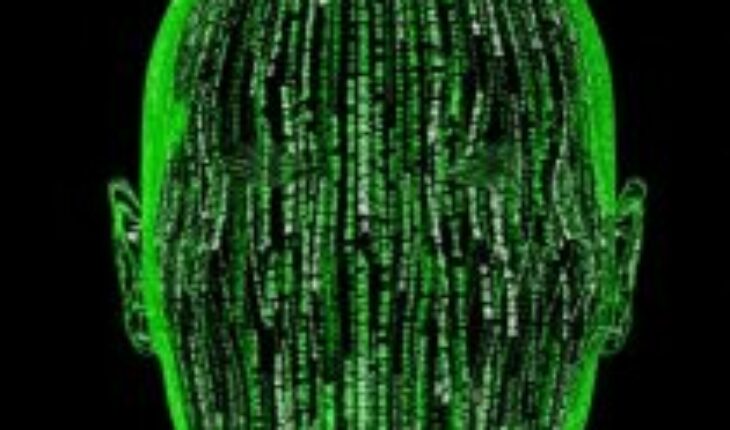Among all the theories about the universe, and how life arose in it, there is one perhaps a little more far-fetched (or not?) that proposes that we are actually living in an advanced virtual world.
Known as the “simulation theory,” in its most basic form—and supported by a branch of science called information physics—it suggests that space-time and matter are not fundamental phenomena.
Instead, physical reality would be composed fundamentally of bits of information, from which our experience of space-time emerges.
If digesting this theory wasn’t enough – especially for those who haven’t seen the movie The Matrix – theoretical physicist Roman Yampolskiy has also outlined, in a new paper, how we could escape if we were really trapped in a hyperrealistic simulation.
However, before entering the escape routes, we must first establish if we are in a simulated universe. To do this, we must go back to the origins of the theory.
The “simulation theory”
In 2003, philosopher Nick Bostrom of Oxford University (UK) formulated the simulation hypothesis, which partly stems from other ideas such as the one put forward by legendary physicist John Archibald Wheeler in 1989, who suggested that the universe is fundamentally mathematical and can be considered to emerge from information.
Bostrom, on the other hand, with a more specific vision on how this information emerged, starts from the premise that this is because an advanced civilization should reach a point where its technology was so sophisticated that the simulations would be indistinguishable from reality, and the participants would not be aware that they are in a simulation.
So the question automatically arises: if we are not aware of it in a simulation, then how to prove whether such an extravagant theory is “real”?
“Simulation theory” suggests that space-time and matter are not fundamental phenomena.
A universe full of bits of information
That’s where physicist Melvin Vopson of the University of Portsmouth (England) comes in. In a recent essay for The Conversation, Vopson, in order to test the intriguing theory, proposes the idea that, if we actually lived in a simulated universe, it would “contain a bunch of bits of information everywhere” and that those bits would “represent the code.”
“Therefore,” Vopson writes, “detecting these bits of information will prove the simulation hypothesis.”
Thus, based on his own proposal for a “principle of mass-energy-information equivalence (M/E/I)”, which suggests that “mass can be expressed as energy or information, or vice versa”, the physicist believes that bits of information would have a small mass. So, if you can find the mass of those bits, he adds, you would theoretically be detecting the bits themselves.
As DW reported earlier this year, Vopson has suggested that information, after solids, liquids, gases and plasmas, could be considered a fifth form of matter in the universe.
And as Vopson himself explains, his experiment to prove their material existence consists of “erasing the information contained inside the elementary particles by letting them and their antiparticles (all particles have ‘anti’ versions of themselves that are identical, but have opposite charge) annihilate in a flash of energy, emitting ‘photons’, or particles of light.”
Exit the “Matrix”
If Vopson could prove it, and we know we’re stuck in a simulation, how could we get out?
In a new paper, Roman Yampolskiy, a computer scientist at the University of Louisville, tries to answer precisely that question and suggests some ways out of the simulation. Spoiler: None involve the blue or red pill like in The Matrix.
Among several considerations, such as, for example, establishing what kind of simulation we are in, Yampolskiy proposes in the first instance to attack with brute force, forcing our simulators to use an increasingly greater computing power and therefore more energy, until they can no longer ignore it.
“Perhaps we could send von Neumann probes to the farthest corners of the universe, in an attempt to deliberately increase resource consumption,” Yampolskiy quotes programmer Gwern Branwen, “or we could run simulations of our own,” he added.
No info methodRoman Yampolskiy involves the blue or red pill as in “The Matrix”.
Gigantic monument in binary
Among the other methods outlined by Yampolskiy, it stands out that of trying to attract the attention of the creators through a gigantic monument in binary to let them know that we know it or that of “hacking” the simulation, although, admits Yampolskiy, so far we are in the first phase of investigation of the possible ways to escape, and that, in reality, there is still much to decipher.
Thus, for the computer scientist, the next step would be to investigate more the structure of the universe, in particular quantum mechanics.
“Since we currently have no ability to read/write the simulation source code and don’t know if our attempts at social engineering attacks have any impact, our best bet is to investigate the structure of our universe on the smallest possible scale in hopes of detecting exploitable effects,” he wrote, adding that quantum mechanics has many oddities. that “would make a lot of sense” if we saw them as failures or possible exploitations.
“Such anomalies, alone or in combinations, have been exploited by astute scientists to achieve what looks like a simulation hack, at least in theory and often in subsequent experimentation (e.g., modifying the past, keeping cats both alive and dead, communicating counterfactually),” he continued.
“Although the quantum phenomena in question are typically limited to the microscale, it is enough to scale the effect to the macro world for them to count as exploits in the sense used in this paper.”
If after understanding the basic idea of the “simulation theory” you still consider that it is nothing more than nonsense, it is worth noting that there are more and more scientists – especially the deeper we delve into quantum mechanics – who consider, at least to some level, that the theory could be plausible.
But no matter which side you are on, what is clear is that the nature of our reality is and will likely remain one of the greatest mysteries out there. In that sense, we still understand very little about the universe and our “reality”, so surely there are still many surprises that we will find on our way.
“The more we take the simulation hypothesis seriously, the more likely we are to prove or disprove it one day,” Vopson concludes.
Follow us on





